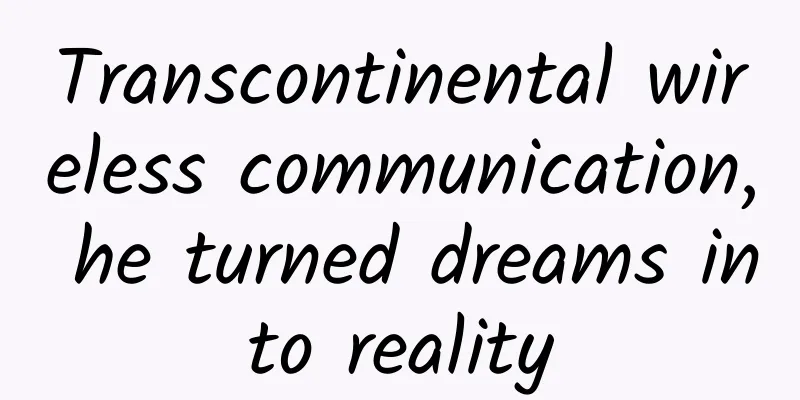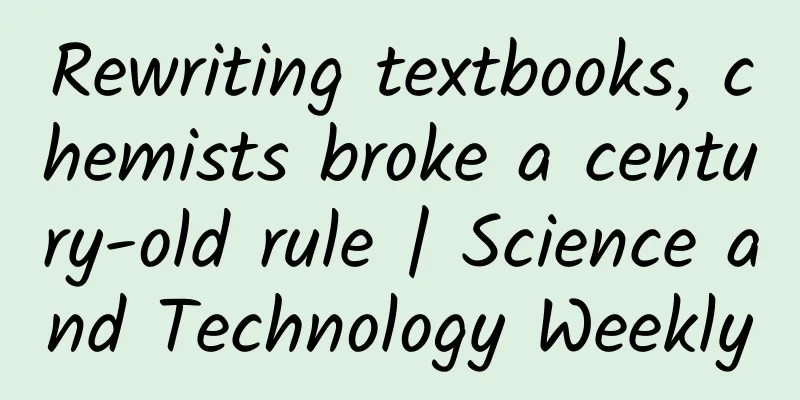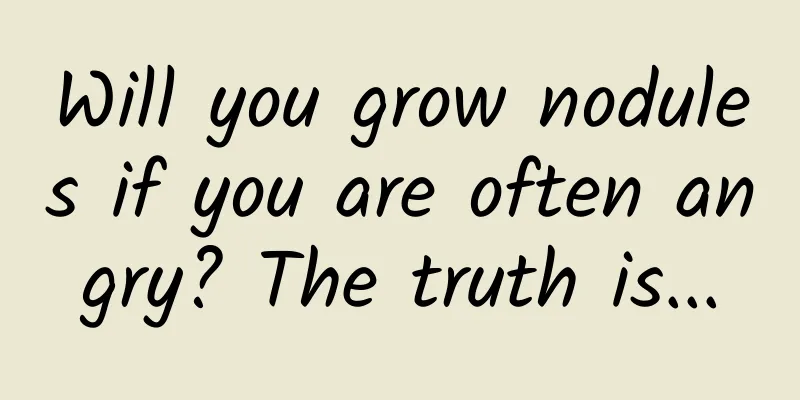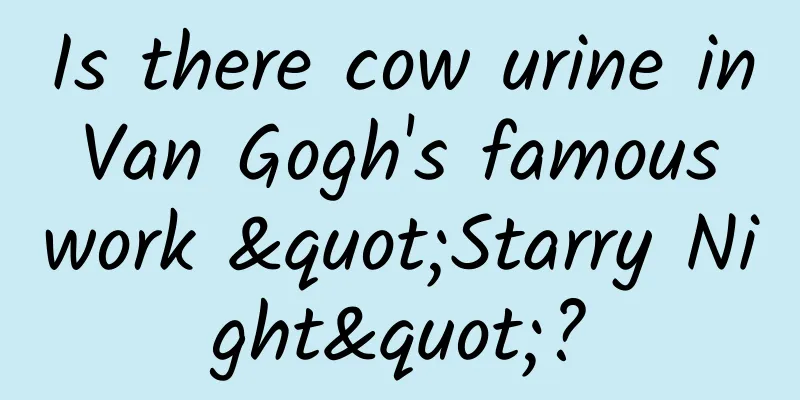Transcontinental wireless communication, he turned dreams into reality

|
Field, who finally succeeded after many setbacks and hardships (see the previous article "A cable connects Europe and America, and the history of human communication has changed"), was admired by people and had wild expectations: how great it would be if the current did not pass through the submarine cable, but directly transmitted information across the ocean. This new great concept did not belong to him alone. But thinking and doing are two different things, and doing and understanding are two different things. The story about this new concept is even more exciting. Written by Yang Weifeng (radio management practitioner), Wang Feng (associate professor at Hebei Science & Technology Normal University) The era of radio communication has arrived German physicist Heinrich Rudolf Hertz proved the existence of electromagnetic waves through experiments between 1886 and 1889. He used an induction coil to oscillate and discharge electricity, and produced sparks through the metal coil. He found the induced electric sparks in the gap of another similar metal device in the room. Hertz's discovery ignited the dream of an Italian youth who fought for his whole life. He was Guglielmo Marconi. In 1894, Marconi began to experiment in the attic of his home, using radio waves to send and receive telegrams, and gradually expanded the distance of sending and receiving. In February 1896, he came to London, England with his mother. The following year, with the help of his family, he founded the first company in the UK that specialized in manufacturing radio equipment - Marconi Wireless Telegraph and Signal Company. In 1900, two companies named after Marconi were in operation with international capital: one was the Marconi Wireless Telegraph and Signal Company, and the other was the Marconi International Shipping Company. At that time, the emerging industrial system had been established, and the two Marconi companies attracted customers interested in high-tech, which enabled them to have income to maintain the operation of wireless networks. One of the largest orders came from the British Royal Navy, where Marconi installed radio equipment for 28 warships and 4 land communication stations. Marconi's business was flourishing and seemed to be developing rapidly, but the company still did not achieve large-scale profits. The reason why it was well received but not popular was mainly due to the operating environment of the communications industry at that time. Although the initial radio communication experiments were carried out on land, the commercial operation of radio technology started at sea. The demand for instant communication between shore and ship, and between ships made the emerging radio technology useful. This does not mean that radio is not needed for communication on land, but because the wired telegraph business occupied the land communication business license at that time, and wireless was not allowed to take the jobs of wired. The volume of maritime communications business was not enough to support Marconi's high expenses for station construction and daily operations. Marconi, who was in trouble, had to seek greater opportunities to maintain the company's development and operations. Another great idea across the Atlantic In order to ensure the company's profitability and long-term development, Marconi planned a groundbreaking event. Starting in 1901, Marconi was determined to invest almost all of his energy and almost all of the company's available funds of 50,000 pounds (which was four times the total amount of patent fees earned in the first four years of the company's establishment) into the experiment of radio waves for transatlantic communication. This was really a gamble! He persuaded the board of directors to hire John Ambrose Fleming, a famous electrical engineering professor at the University of London, as the company's scientific advisor at a high annual salary of 500 pounds (the same as Marconi's annual salary). He built a communication station next to the Poldhu Hotel in Cornwall, southwest England, where he designed and tested equipment for transmitting transatlantic signals. Marconi also promised that if the signal successfully crossed the Atlantic, in addition to the fixed annual salary given by the company, he would also transfer 500 shares of Marconi Wireless Telegraph Company to Fleming. The additional condition was: "If the Atlantic is successfully crossed, the main honor will and must always belong to Marconi." Marconi was convinced that radio waves could cross the Atlantic, but he didn't know how to engineer it. Fleming found a way to do it. Marconi was the company's greatest asset and its hallmark. Only an organization like Marconi could support such a risky venture. Historians agree that Fleming played a decisive role in the technical support of the success, but the main credit will always go to Marconi. Setbacks and challenges are inevitable Fleming designed a transmitter consisting of a 25-kilowatt AC generator, a 20,000-volt transformer, and a high-voltage capacitor, which could produce sparks about 2.5 centimeters long and as thick as a wrist, which was quite powerful. The power of the generator set and the transmitter should have been the highest in the world at that time, and the launch index of this equipment far exceeded other equipment. The antenna of the Poldhu communications station before and after it was blown down by the wind. (Archive of Marconi Corporation, PLC.) On September 17, 1901, the Poldhu communications station was hit by a severe storm, and 20 61-meter-high masts were almost destroyed, seriously damaging the antenna of the transmission system. In order not to affect the implementation of the plan, Marconi decided to temporarily erect two 49-meter-high masts to support the antenna. A makeshift antenna at the Poldhu communications station after it was damaged. (Archive of Marconi Corporation, PLC.) On the other side of the Atlantic Ocean in Newfoundland, after multiple site surveys and comprehensive considerations, Marconi decided not to build a station at Cape Reyes for the time being (the reason why the station was built in 1904 was mainly because the telegraph company that laid the Atlantic telegraph cable enjoyed a monopoly on telegraph communications in Newfoundland from 1854 to 1904), but to choose another place to temporarily build a receiving device using kites or balloons instead of fixed masts. It would not violate local regulations if it was just an experiment and not a commercial operation. On November 22, Marconi issued an operating instruction for the transmission of signals to the Poldhu communication station: after receiving the telegram from the company's London office, continue to send a simple Morse code "S", that is, "· · ·" every day from 3 pm to 6 pm Greenwich time. The same procedure is carried out every day except Sunday until a notice to stop is received. On November 26, 1901, Marconi, his loyal assistant George Kemp and another assistant PW Paget, as well as two tons of iron tuning equipment and several large vats of sulfuric acid, boarded the Allan Company's Carthaginian from Liverpool Port to St. John's Port in Newfoundland. Imprisonment: This is not normal During this voyage across the North Atlantic, Marconi was worried. At that time, most physicists believed that it was impossible to transmit radio signals across the Atlantic. They believed that radio waves radiated outward in a straight line like light and would not travel around the curvature of the earth. Even if the signal was strong, the electromagnetic waves emitted would become tangents to the earth and shoot into the universe, instead of falling thousands of meters away. Technical experts always focus on the practical functions of scientific discoveries, while scientists focus on the mysteries of nature. Even Hertz himself thought that after completing the famous electromagnetic wave verification experiment, it had no practical use. At the end of 1889, German electrical technology expert and engineer Huber mentioned the idea of using electromagnetic waves (called "Hertzian waves" at the time) for communication in a letter to Hertz. But Hertz's reply disappointed him greatly. Hertz believed that if electromagnetic waves were to be used for long-distance communication, at least a giant concave reflector as large as the European continent would be needed, and they would have to be hung very high. This reply actually denied Huber's idea. Hertz's reply was calculated. This large mirror was to take into account the wavelength of electromagnetic waves that could be generated artificially at that time. Marconi was more of an entrepreneur than a scientist, which made him believe that electromagnetic waves would propagate around the curvature of the earth. He was determined to carry out the crazy experiment of transatlantic radio communication. After all, it was the huge commercial value behind it! Perhaps Marconi's real teacher was Field, an American entrepreneur who laid the transatlantic telegraph cable after many setbacks. Radio waves crossed the Atlantic If the progress of science and technology has a clear direction, it is definitely guided by people's wishes. And people's wishes often rely on people who can integrate more resources to achieve them. Marconi (center), Kemp (left), and Paget took a group photo on Signal Hill in St. John's, Newfoundland. The large hexagonal kite behind the three was the Baden Powell Levitor Kite brought from the UK. It carried an antenna more than 150 meters into the air and made contributions to the reception of transatlantic radio signals. Photo by James Vey (from: Library and Archives Canada) On the afternoon of December 12, 1901, Marconi and his assistant received a radio signal from Ireland through a 155-meter-long antenna raised by a kite. When they heard the intervals of Morse code "beep, beep, beep..." in the strong wind, they were excited and happy but could not easily believe that it was true: the radio waves sent from Poldhu traveled 3,218.7 kilometers steadily around the curvature of the earth, crossed the Atlantic Ocean and arrived at the signal hill in St. John's, Newfoundland! The distance of the signal transmission this time was nearly 10 times the previous communication record, confirming that Marconi's belief that "radio communication is unlimited no matter how far away" was correct. The verification signal they received was just three consecutive short “·”s, which was indeed too simple. The biting northwest wind was mixed with the noise of the equipment. After a long period of intense monitoring, they themselves would doubt whether they really heard the sound of the signal or just hallucinations. Therefore, they also planned to release the news after receiving a clearer signal the next day, but the weather became worse the next day and no signal was received. Today we know that due to the factor of solar radiation, it is more advantageous to receive transatlantic radio signals at night than during the day. Marconi's choice to conduct the experiment in the afternoon was disadvantageous. Marconi did not rush to make the news public, because this explosive news would inevitably affect the company's stock price. As early as 1898, the news of Marconi's successful cross-sea wireless communication experiment caused the stock price of the Transatlantic Cable Telegraph Company to plummet. However, before releasing the news, Marconi was able to report the situation to the company's headquarters in London through the transatlantic cable, so the company had the opportunity to inject more stock chips before the news was released. This operation was legal in the UK at the time. On December 17, 1901, after the successful transatlantic radio communication experiment, the media hosted a "re-enactment" of the scene (Marconi is on the left, and the other two are local workers). This staged photo was widely circulated. Photo: James Vey (from: Library and Archives Canada) After communicating with the company’s London headquarters, Marconi announced the news to the press and the Italian government on December 14. The whole of St. John’s was immersed in great excitement, followed by a frenzy in the news media, and newspapers around the world echoed the New York Times’ statement that “Marconi has announced the most surprising development in information science in modern times.” On December 15 (Sunday), the New York Times published the news of Marconi’s transatlantic signal on the front page and published a biography of Marconi. To make the report more complete, the New York Times asked Martin (Thomas Commerford Martin) to do the conclusion. Martin was the editor of Electrical World at the time, an authority in the electrical profession and the media, and could talk about Marconi’s achievements in a larger context. Martin co-founded the American Institute of Electrical Engineers (AIEE, one of the predecessors of the now world-famous Institute of Electrical and Electronics Engineers (IEEE)) in 1884 and served as its president from 1887 to 1888. Martin enthusiastically praised Marconi as a new young scientific and technological genius and expressed his surprise and joy at Marconi's successful crossing of the Atlantic. Authoritative figures came forward to support In fact, the academic and industrial circles were skeptical of Marconi's experiment. They did not invite other professionals to the scene when receiving the signal, let alone invite media personnel to observe on the spot. Except for him and his assistant Kemp, there was no third person outside the company who could testify. At this time, some professionals supported Marconi. For example, Michael Pupin, a famous professor of electricity at Columbia University and an authoritative physicist, publicly praised Marconi's feat. But the person Marconi should be most grateful to is Martin. Martin judged Marconi to be a man of the hour who could be trusted. To that end, Martin made the young Italian the guest of honor at the annual dinner of the American Institute of Electrical Engineers (AIEE) on January 13, 1902. Martin, who had been the president of the AIEE and the host of many events, had no difficulty convincing the leaders of the society to give Marconi the honor. However, since not everyone believed Marconi's claims, Martin found it difficult to get the engineering community to attend the dinner, so he had to turn to Elihu Thomson (founder of the Thomson-Houston Company in the United States, which merged with Edison's company in 1892 to form General Electric) to support the event. Once the news of Thomson's endorsement of Marconi spread, Martin was able to fill the 300-seat Astor Gallery at the Waldorf-Astoria Hotel. Despite this, Marconi wanted to find more sufficient evidence for himself. In February 1902, he boarded the passenger ship "Philadelphia" from Britain to the United States. The ship was equipped with a wireless telegraph system. During the transoceanic voyage, Marconi periodically listened to Morse code messages from Poldhu and invited the captain and the first mate to listen. He also recorded the time and place of the message on a nautical chart. This nautical chart with eyewitnesses on the "Philadelphia" was more powerful evidence that radio waves could be transmitted across the Atlantic. Afterwards, repeated experiments and successful communications over longer distances proved that Marconi was not lying. Note: Marconi did not disclose the specific frequency of the first transatlantic radio wave to the media at the time. It was not that he deliberately avoided the technical indicators of the Poldhu transmitting system, but mainly because the radio frequency at that time was still difficult to accurately measure. In 1903, Fleming said in a speech that the wavelength at that time was estimated to be more than 1,000 feet. In 1904, Fleming invented a device to measure the transmission frequency (or wavelength). In 1908, Marconi said in a speech at the Royal Society that the wavelength at that time should be 1,200 feet, corresponding to a frequency of 820 kHz. The success of transatlantic radio communication brought significant benefits and development opportunities to Marconi, but the significance of this experiment was far more than just commercial value. From the perspective of human understanding of nature, its scientific enlightenment value was even more precious. It not only led to Marconi and German physicist Karl Ferdinand Braun winning the 1909 Nobel Prize in Physics for inventing and improving wireless telegraphy, but also expanded the scientific horizon. The scientific doubts surrounding transatlantic wireless communication and the improvement of communication quality triggered reflections and confirmations, like knocking down dominoes, and gave birth to a series of major scientific achievements. Gain 1: Humans know the existence of the ionosphere The reason why people didn't dare to think about it, didn't dare to do it, and even didn't dare to believe that this was true was because people at that time didn't know that there was a layer of ionosphere in the sky outside the earth, and the ionosphere would reflect electromagnetic waves, acting as a giant spherical reflector, causing the electromagnetic waves to be reflected multiple times between the ground and the ionosphere, thereby allowing the electromagnetic waves to travel around the curvature of the earth. In 1902, Oliver Heaviside and American engineer Arthur Kennelly simultaneously proved theoretically that radio waves propagate around the world because they bounce off a layer of charged gas particles in the ionosphere. This ionosphere was later called the "Connelly-Heaviside layer". Heaviside was a self-taught British mathematical genius and physicist. He did not receive formal higher education, but made many original achievements in mathematics and engineering. He founded vector analysis, simplified Maxwell's equations into the form used today, and made a significant contribution to the development of electromagnetism. In 1924, British scientist Edward Victor Appleton, assisted by Miles Barnett, conducted an experiment to detect the height of the ionosphere using continuous waves. They used electromagnetic waves of varying frequencies to receive echoes from the ionosphere, directly confirming the existence of the ionosphere for the first time. Their experiment confirmed the existence of a conductive layer in the upper atmosphere that can reflect radio waves beyond the curve of the earth, and also showed that sometimes the reflection may come from a second layer - a higher conductive layer. Their initial findings were published in the journal Nature in 1925. Appleton won the 1947 Nobel Prize in Physics for confirming the existence of the ionosphere through his research on the physical properties of the upper atmosphere. This triggered in-depth research and new exploration of the Earth's atmosphere. Gain 2: Opening the era of radio astronomy In 1927, a university graduate named Karl Guthe Jansky joined Bell Labs, which had just been established for two years, as a radio engineer. At that time, there was still background noise in the radio communication system across the Atlantic Ocean, and he was ordered to investigate the source of this background noise and eliminate radio interference that might affect signal transmission. Jansky set up a large rotating antenna to receive radio waves at a frequency of 20.5MHz (14.6 meters in wavelength). After several months of recording and analyzing, he classified the background noise into three types: nearby thunderstorms, distant thunderstorms, and a faint hissing sound of unknown origin. He spent more than a year investigating the third type of background noise and found that its intensity fluctuated once a day. Jansky initially speculated that the noise was coming from solar radiation. However, after a few months, the strongest source of the noise signal began to move away from the position of the sun. He determined that the signal repetition period was 23 hours and 56 minutes, which was exactly the time of the Earth's rotation relative to the universe (sidereal day), not the solar day (24 hours). Jansky believed that it came from the center of the Milky Way, and the signal source in the direction of Sagittarius was the strongest. His discovery was widely publicized and published in the New York Times on May 5, 1933. He published the classic paper "Obvious Source of Electronic Interference in Outer Space" that year. His discovery marked the birth of radio astronomy, ending the history of people only being able to observe the universe through visible light, expanding the human vision of understanding the universe, and opening a new era of astronomical observation. The four major astronomical discoveries in the mid-20th century - interstellar molecules, quasars, microwave background radiation and pulsars - were all made through the means and methods of radio astronomy. At this point, the two stories about transatlantic communications have come to an end, but the science and engineering of communications for the benefit of mankind continue to develop. These two independent but interconnected stories have led to a series of major scientific events and achievements. These legends are sigh-worthy, and the great scientists and entrepreneurial spirit are worth remembering. Main references [1]W.Bernard Carlson.Tesla:Inventor of the Electric Age[M].New Jersey:Princeton University Press,2013:331-352 [2] Marc Raboy. Marconi: the Man Who Networked the World[M]. New York: Oxford University Press, 2016: 34-192 [3] Sungook Hong.Wireless: From Marconi's Black-Box to the Audion[M]. Cambridge, MA: MIT Press, 2010:20-32 [4] Bruce J. Hunt.Oliver Heaviside A first-rate oddity[J] Phys. Today 65(11), 48 (2012); doi: 10.1063/PT.3.1788 View online: http://dx.doi.org/10.1063/PT.3.1788 View Table of Contents: http://www.physicstoday.org/resource/1/PHTOAD/v65/i11 [5] Qian Changyan. Experimental method and process of Hertz's discovery of electromagnetic waves[J]. Physical Experiment, 2005(7):vol.25 [6] One family: generations of discoverySee: https://www.otago.ac.nz/otagobulletin/news/otago740666.html This article is supported by the Science Popularization China Starry Sky Project Produced by: China Association for Science and Technology Department of Science Popularization Producer: China Science and Technology Press Co., Ltd., Beijing Zhongke Xinghe Culture Media Co., Ltd. Special Tips 1. Go to the "Featured Column" at the bottom of the menu of the "Fanpu" WeChat public account to read a series of popular science articles on different topics. 2. Fanpu provides a function to search articles by month. Follow the official account and reply with the four-digit year + month, such as "1903", to get the article index for March 2019, and so on. Copyright statement: Personal forwarding is welcome. Any form of media or organization is not allowed to reprint or excerpt without authorization. For reprint authorization, please contact the backstage of the "Fanpu" WeChat public account. |
>>: Be careful when shopping online! Keep this 618 online shopping fraud prevention guide!
Recommend
How can tool-type products achieve long-term user growth and retention?
How can tool products break through the dilemma o...
Uncovering the secrets of SEM and information flow advertising in WeChat
Speaking of the four words "add fans on WeCh...
Are you one of the people at high risk of cancer?
Author: Professor Guo Tuankui, Department of Onco...
What role does advertising play in the three processes of operation?
Recently, this advertisement of "999 Cold Re...
"Special Forces-style tourism" is popular! Should you do something special during the May Day holiday? Check out the health tips first →
The May Day holiday is coming soon Many friends A...
iOS 9 exposed a major bug: bypassing the lock screen password to access the photo album and contacts
Data shows that the installation rate of iOS 9 re...
Kuaishou short video operation strategy in 2022
1. Current Development Status of Kuaishou As for ...
Creative promotion of information flow, use these two tricks to get Buff immediately
Whether we are sales or marketing personnel, we h...
In addition to PV and UV, product operations also need to pay attention to these indicators!
In the past six or seven years, I have been starti...
Bullets are only nanometers in size! This may be the world's smallest shooting video game →
In a laboratory at Nagoya University in Japan, sc...
How to select products for live streaming sales? 7 practical methods!
With the growing popularity of short video platfo...
Next time your boss asks you to refactor your system, let him read this article
[[155440]] Everyone is unhappy with the old legac...
How to systematically and efficiently obtain free traffic?
If marketing were a science, I'd rather be a ...
Native advertising has deep routines. How can case-based copywriting make information flow advertising more outstanding?
You must have seen headlines like this: "Oh ...
When you reach middle age, do you see your arches collapse? Your whole body posture may be affected...
Have a pair of straight long legs It should be th...









